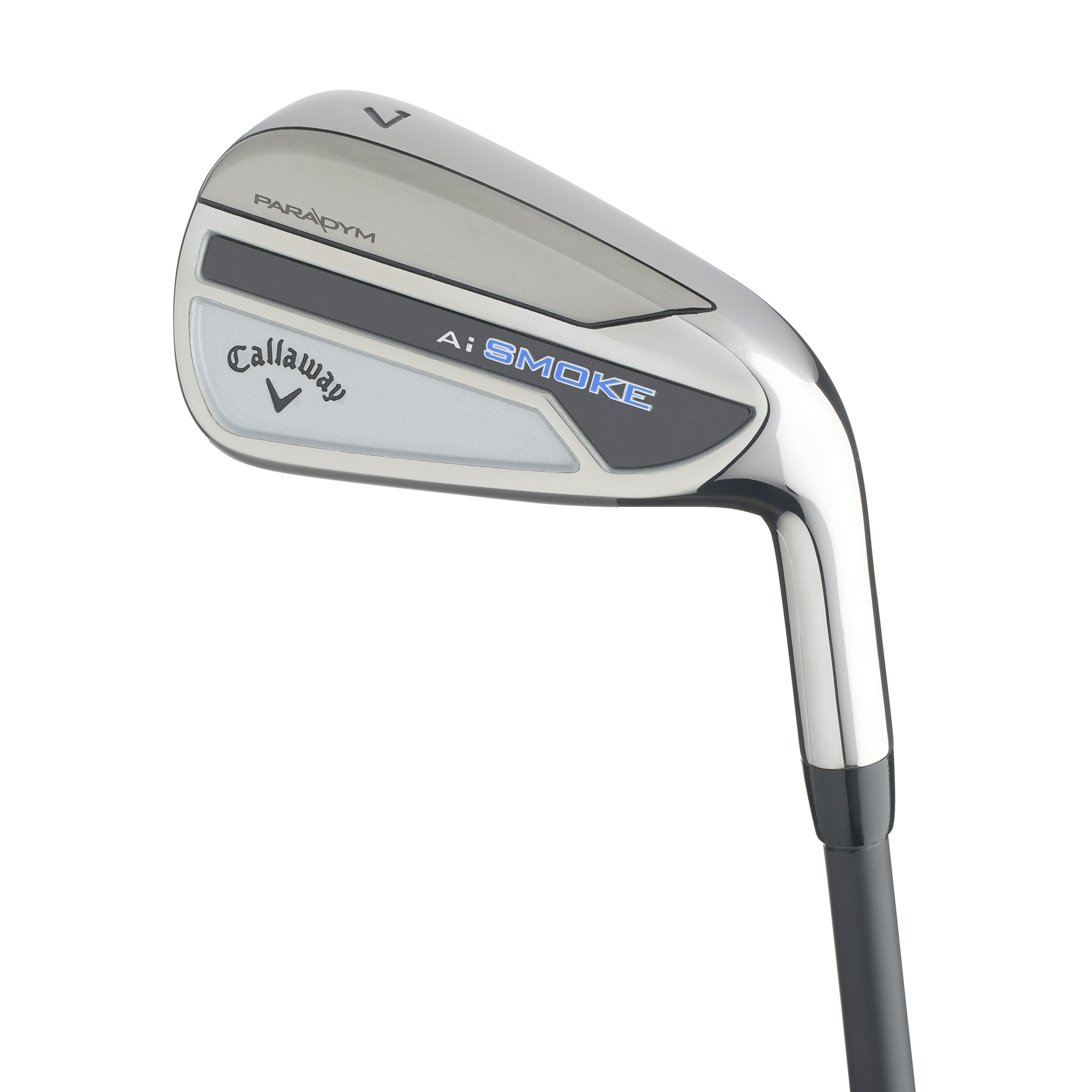Equipment
Callaway Paradym Ai Smoke, HL and Max Fast irons: What you need to know

What you need to know: Callaway’s latest irons line—the Paradym Ai Smoke—combines advance machine learning with big data. The result is a face designed with a unique topology for every iron that creates a series of sweet spots across the face. The line features three models geared towards specific player types. The standard Ai Smoke targets average to high swing speeds; the Max Fast is for those needing to generate more swing speed and launch; and the HL model is for players who need a height boost.
Price: $143 per iron, for all models.

The game-improvement category is probably the most expansive of any and requires an iron that works for a variety of swing speeds and swing paths. To achieve this, Callaway leaned into its history of using artificial intelligence to run through thousands of possible designs. The result is a hollow-body iron featuring micro-face deflections (think tiny moguls behind the face ranging from 1.14 millimeters to 3.40 millimeters thick). The purpose is to produce faster ball speeds off the 17-4 stainless-steel cupface.
3 Cool Things
1. Data-driven design. Callaway was one of the first companies to explore the possibilities of machine learning, and its R&D team has let the supercomputers continue to crank, only this time utilizing significant real-player data to help guide the options.
The results are three irons geared to address specific attributes. Each has an A.I.-designed face with a mogul-like topology. What's created is what the company calls "micro deflections" that, in effect, produce mini sweet spots across the face. In the standard model, the club looks comforting at address with a slightly longer blade length and a relatively slim topline. Hidden, however, is the hollow-body design with a cupface where parts of the face wrap around the sole and topline to create a faster-flexing face.
“We’ve increased our use of topography in the iron face, similar to what we’ve done on the driver,” said Brian Williams, VP of R&D for Callaway. “We’ve seen that we can have a face that can flex and, like we do in the woods, really control launch and spin, and manipulate those ball trajectories off different points in the face. In an iron application, we wanted to use [artificial intelligence] to really improve those launch conditions and help different types of golfers achieve optimal launch options.”
Assisting that on all three models is the use of metal injection-molded tungsten weighting to precisely place the center of gravity in an optimal position, while urethane microspheres assist sound as they support the thinnest areas of the face. To help boost swing speed, the shaft lengths are a quarter-inch over standard length.

2. Speed-challenged golfers need help, too. Although the standard model is geared for moderate to fast swingers, the Ai Smoke Max Fast is aimed at those straining to get every last mile per hour of ball speed. Incorporating all the tech of the standard model, the Max Fast has slightly lighter headweights and ultralight shafts to help deliver a higher launch.
“The Max Fast player will be obvious to fitters with [their] low swing speeds,” Williams said. ”We’ve gone lighter in head weight to promote extra speed and head space, and we’ve asked the face to prioritize launch and speed for this player. I think these are going to be a fitters’ delight in really helping what these players are seeking based on their swing code.”

3. Ready for launch. The Paradym Ai Smoke HL differs from the Max Fast in that it focuses more on creating height than speed (although there is plenty of that, too). With an eye toward players who carry their 7-iron 130 yards or less, the company’s supercomputer simulated tens of thousands of impacts to arrive at a design that aims to keep the ball in the air longer by improving launch and spin.
“This cavity-back design helps; it’s a confidence builder, it promotes MOI and forgiveness,” Williams said. “But we focused the face on, was [to ask] Ai to optimize for launch and spin. We wanted to get face deflection that would help this player get the ball up, hit peak apex heights, and land steeper into greens.”


